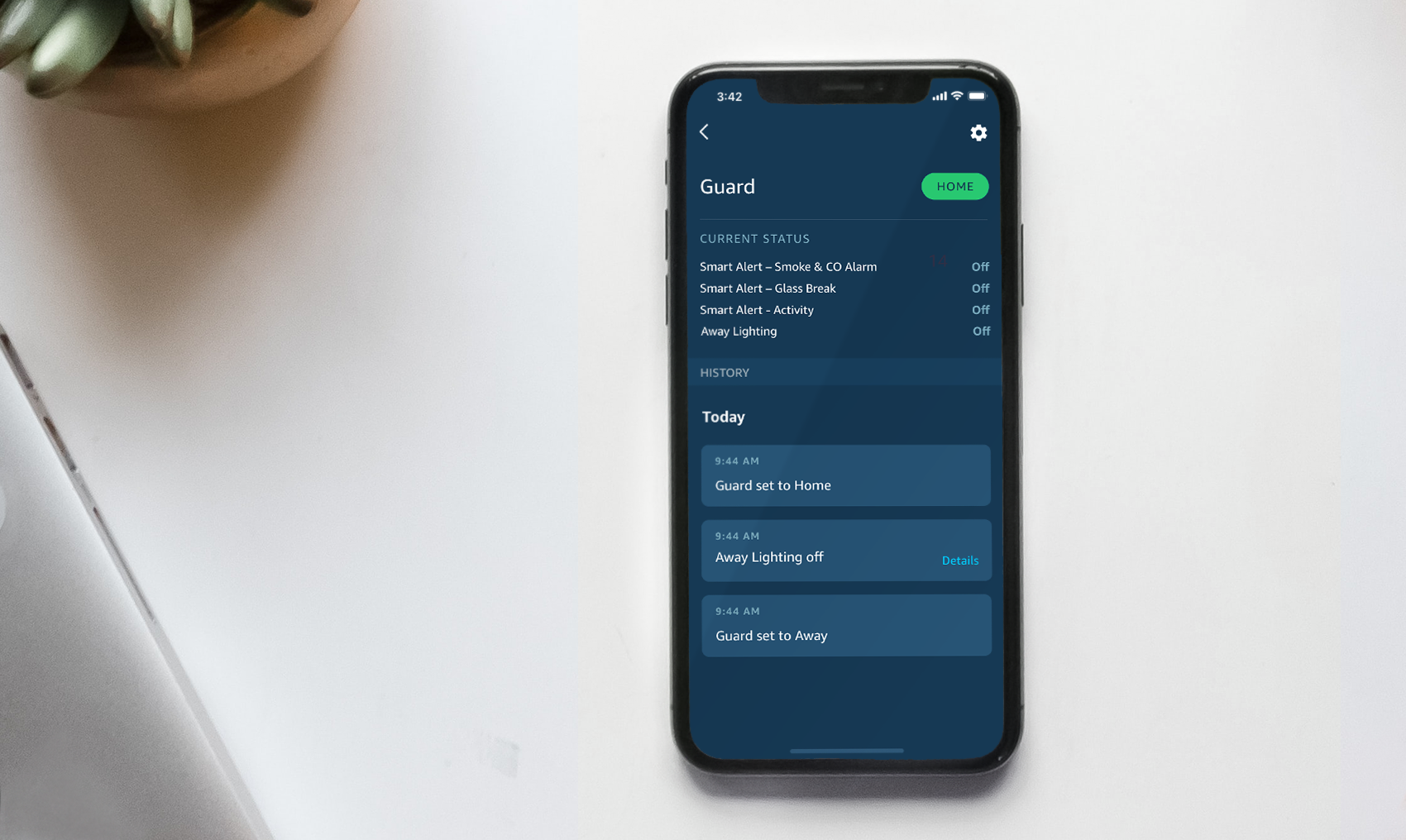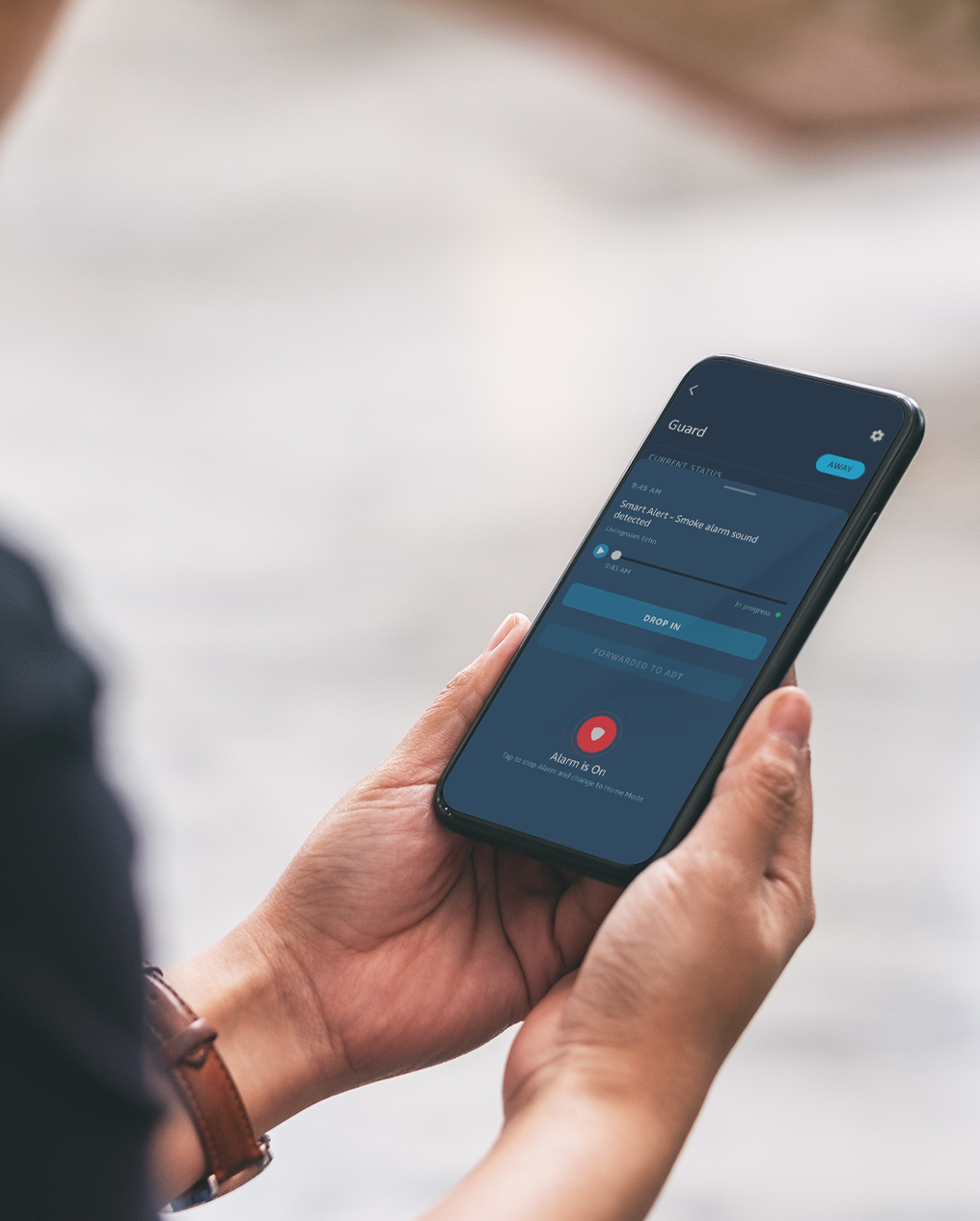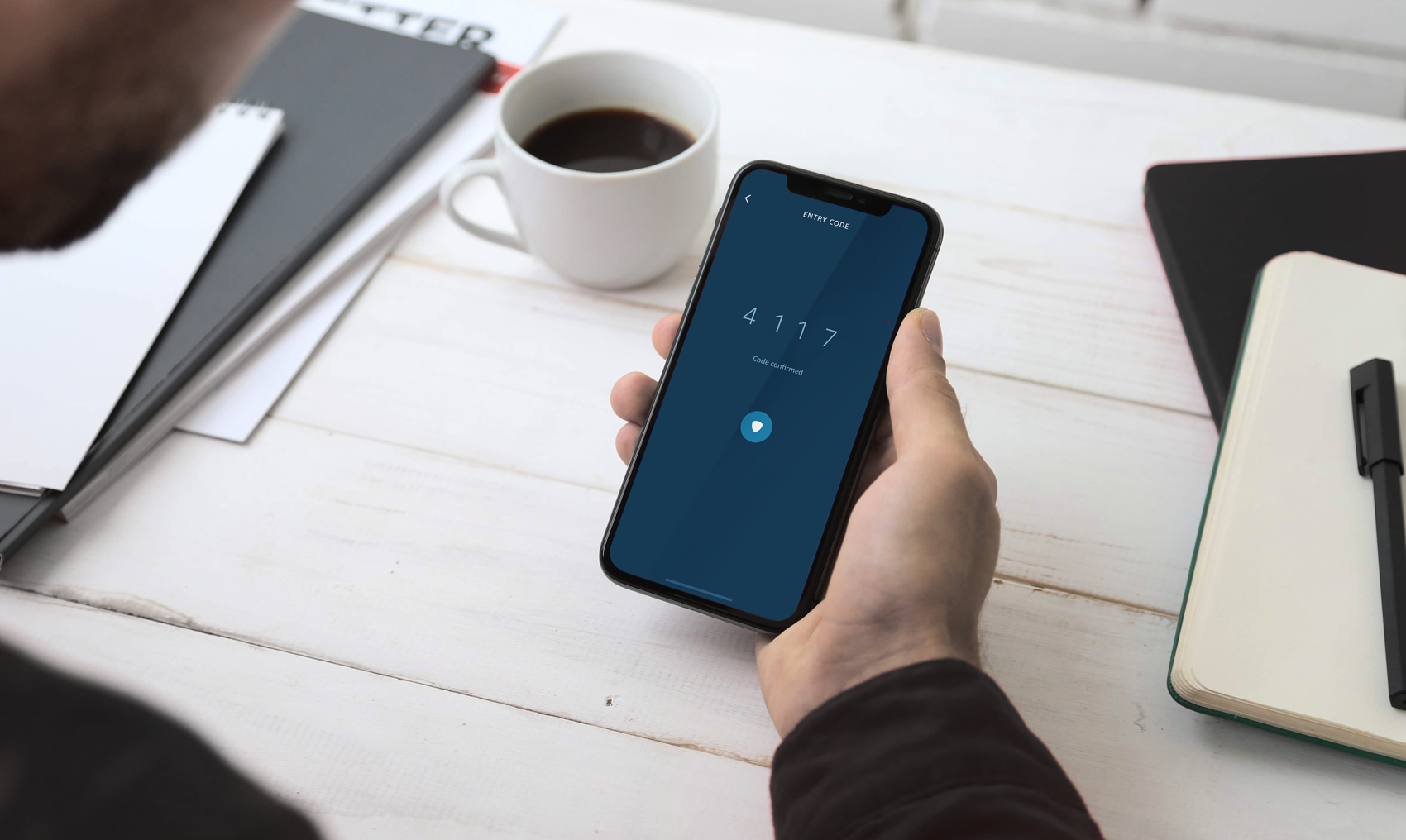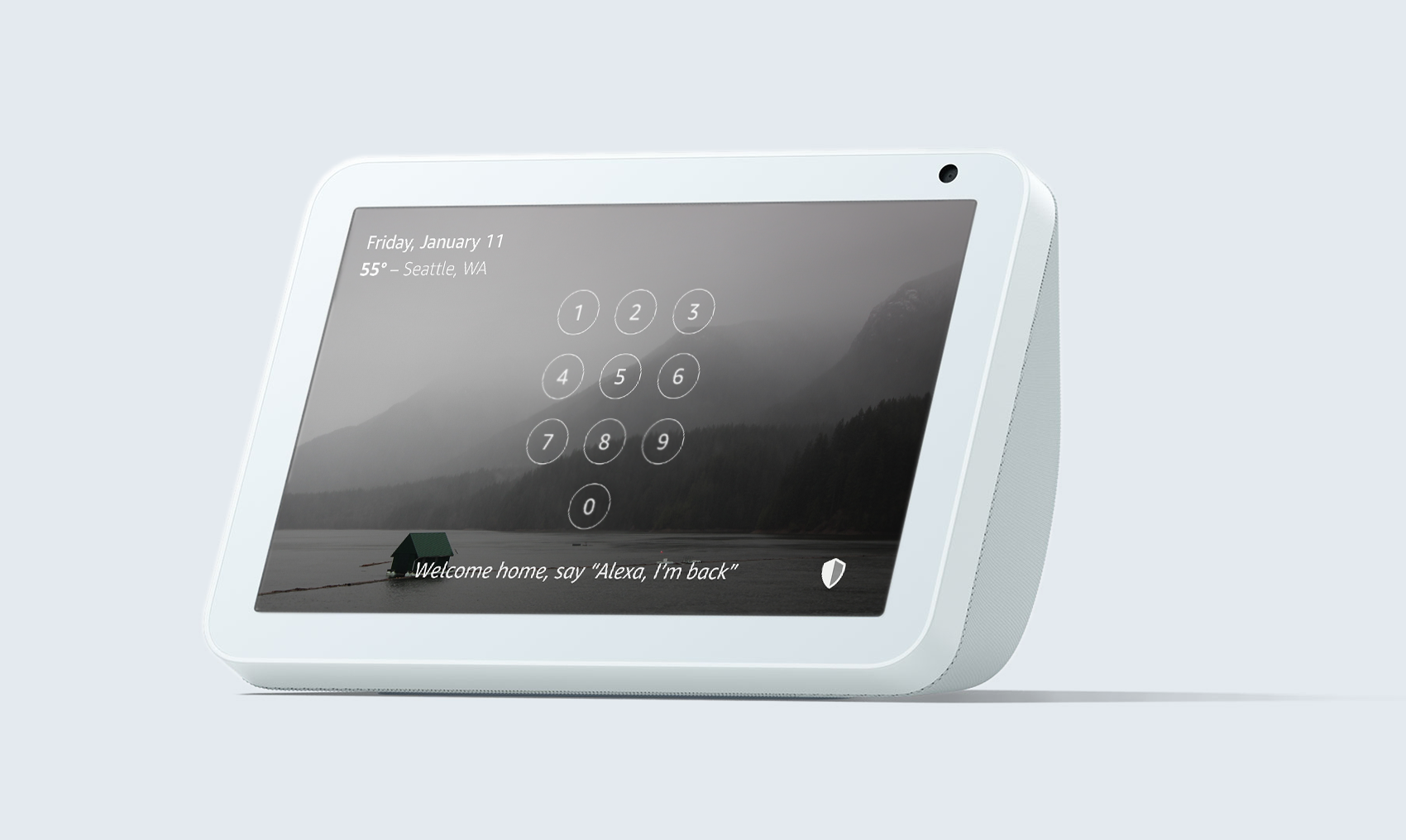Guard
←
Design for the addition of highly requested features to the smart home Guard customer experience, including support for entry and exit delays, potential intruder detection, and user authentication.

Overview
This project addressed top customer and partner requests that included audio detection in “away” mode, entry delay, and the integration of third-party security service provider check-in to drive more accurate and timely emergency response.
Customer
Because Guard works for anyone with an Alexa device (>100 million devices sold) the potential customer base was large. Setup and control for potential new smart home, and existing Guard customers were areas of focus.
The core new feature addition was providing customers with the option to have Alexa detect potential intruder sounds when they switch to “away” mode. In support of this, existing smart home customers reported being open to more intrusive, proactive notifications from Alexa when the messages related to safety and security.
In addition, customers already using a security service requested the ability to allow service providers audio access during an event to validate both ‘Smart Alerts’ and alarms, thereby reducing false dispatches.



Design solution v1
The project was split into two parts. The first part was working with sound designers, engineers, and project managers to design a home entry experience that would work as a stand-alone Alexa service that didn’t require a security panel. The second part was figuring out how those new features would integrate with existing security service providers to allow verification.
Work was completed across VUI, device (light), multimodal devices, and the Alexa app.
There were two points of ingress to features: one was via setup for new Guard customers and the other was for existing Guard customers who were adding a security panel or adopting these new features from settings.
One area of complexity was around migration of existing security panel customers into the Guard service. After an initial pass that addressed each use case individually, I produced a design solution that distilled a large number of settings variants (that included multiple voice codes) into a simple end user experience. Grouping scenarios and creating some rules around what was available and visible to the customer in each group helped achieve this.

Feedback & testing
Because privacy and security are important to Amazon customers, the project underwent several reviews, including senior leadership, privacy and experience bar raisers. VUI, timing, audio design, multimodal interaction, and messaging feedback was gathered, and I integrated design changes and updates into the design prototypes after each review.
Task completion for each use case was successful in user testing. Customers who regarded Echo devices with screens suitable for a communal space in their home, such as the kitchen or the living room, considered these locations central and a good fit for entry delay control.

